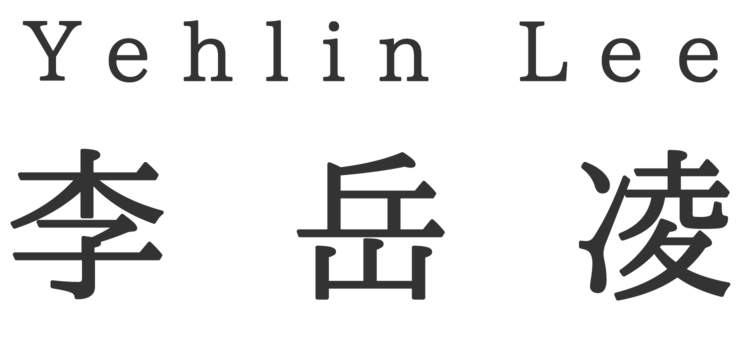Rinse.io is an online community for photographers to tell their stories behind photography. We had an interview about the series "Listening to the Dark".
The relationship between visual art and music has always been a great motive for artists throughout art history. Let’s find out the inspirational conflux when the two senses meet.
Yehlin Lee (李岳凌), a talented Taiwanese photographer, shared his latest photo essay “Listening to the Dark” with Rinse. To him, photography is a way to know oneself better, and to know one’s relationship with outer world. He also believes that “taste” and “inner strength” are essential to photography or other forms of art. That is, one has to cross the boundary of art genre, time, space and even culture; to know oneself through observing his/her own sensational experience, and to distill one’s personal originality.
…. I can’t help but wonder: If Taiwan shapes who I am, does the dark side of the island reflects part of me that I was never aware of?
I walk on the fringe of the city with a camera, mostly when daylight falls. I turn my attention to my ears, away from city noises…….
In fact, rather than photography, Lee started his career in sound art since 2001. He was influenced by the renowned sound artist Dajuin Yao, and worked mainly in electroacoustic music composition, “musique concréte”, and humanistic soundscape recording.
According to Lee, Dajuin’s internet broadcast “Foretaste Radio” was and still is the widest and deepest listening experience. It laid the foundation of his pursuit of art. All the programs could still be found here.
Q: You were specialized in Music and Sound Art. What made you start to photograph?
Few years ago, I start to make sound art, and also take parts in interactive art. Several years past by, I became so frustrated about the bluffing in the art scene. On the other hand, I knew my works were yet on par with those made by the masters. I can’t help but fell into a deep depression. The only thing I could do was to let go everything and turn to yoga practice, which nourishes me both physically and mentally.
In 2011, out of curiosity, I joined a photography course “ExLab” and started to photograph. In mid-2012, luckily enough, I was accepted to join the photography workshop, held by Magnum photographer Chien-Chi Chang. That’s how I start to photograph until now.
Q: As you mentioned “looking for aural aesthetics with vision”, what is the similarity and difference between photography and sound works? How do they inspire each other?
The relationship between visual art and music has been a great motive for artists throughout art history. One topic is called “Synesthesia”. Some people were born with a capability of “hearing” the color, or “seeing” the sound. Although I am not one of them, I can somehow feel the relation between colors and musical timbre; the connection between white space in an image and a rest in music; or the parallels between lines and melodies.
When I make sound works, I am alone in the studio. Composing is totally inner work; but for photography, I have to walk into the world and get connected with people. That’s the major difference between working in sound and photography.
Q: What is photography to you?
Just like any good art, it is a persistent practice to approach the inner self.
Q: What is the motive of “Listening to the Dark” series? What is the theme of it?
My way of photography does not come from a concept beforehand. I did not come up with an idea first then go take the photos; nor do I design things to shoot. I shoot whatever interests me, accumulate a lot of photos, and then see which photos attract me and why. I try to trace how my way of seeing changes, and hone this visual sensibility repetitively. These changes may not come from my consciousness. They are deeper, more physical and more instinctive.
In the end of 2013, I attended Alex Webb & Rebecca Norris Webb’s project workshop. I can’t pay more respect to their excellence and experience. Those photos they favored are totally different from the ones I picked. They dug out the other side of me that I was never aware of.
Afterwards, I realized that these night time images were indeed related to my experience in sound art in the past. Back then, we often listened to music or performed on stage in dim light or complete darkness. Some performances even required the audience to cover their eyes with a piece of cloth. Generally, human brain put more than 70% of its attention on visual information. Thus, only when you are in sheer darkness, you immerse yourself in the world of sound — that is when you are listening for real. It is a complete different sensational experience.
Therefore this series is named “Listening to the Dark”. This concept is derived from sensational experience and bodily practice.
Q: During the process of shooting, was there anything interesting or frustrating happened? What was your response?
A: Taking photo in this way, you get more than a 99.9% chance of frustration and failures. Nevertheless, when the 0.1% happened, all the hard work is worthwhile. For instance, the shot of a rooster standing on the wall was taken at Lugang Township. Only did I get home that I found my belly had got bitten brutally by mosquitoes. The suffering was beyond any word.
Q: In this series, which one is your favorite or impresses you the most?
A: The last one.
Q: Please say something to audiences viewing this work.
Don’t think too much.
There is no rush to interpret the frame.
Give yourself more time to feel, slowly.







